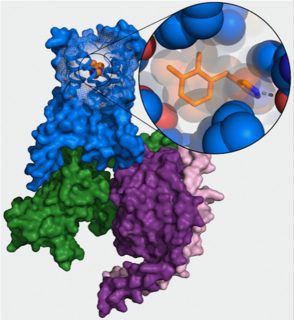Structure decoded

Research group succeeds in determining the detailed structure of an alpha adrenergic receptor
A team including researchers from FAU has succeeded for the first time in taking high-resolution images of an alpha adrenergic receptor. Decoding the structure of receptors such as these can then be taken as the basis for developing special selective medicines. The results have been published in the journal Nature Chemical Biology.
The messenger substances adrenaline and noradrenalin become effective after joining to adrenergic receptors. There are both alpha and beta adrenergic receptors, which can then be divided further into other subtypes. In medicine, these adrenergic receptors offer a valuable point of attack for medicines which can be used to tackle anxiety after operations, to treat opiate addiction, cardiovascular diseases, asthma or prostate enlargement or to reduce swelling in mucous membranes.
The adrenergic receptor subtype which the drug attaches to determines the effect. The advantage: Subtype-selective drugs such as these have fewer side effects.
High resolution receptor structures are an invaluable asset when it comes to designing selective drugs. In the last decade, researchers have successfully used x-ray crystallography and cyrogenic electron microscopy to determine the structure of various beta adrenergic receptors, but until now they have been unsuccessful in decoding alpha adrenergic receptors.
The current article published by the working groups led by Prof. Dr. Peter Gmeiner, Chair of Pharmaceutical Chemistry at FAU, Germany, Nobel prize winner in chemistry Prof. Brian Kobilka, Stanford University, USA, and Prof. Dr. Hong-Wei-Wang, Tschinghua University, China shows the first high-resolution structure of an alpha adrenergic receptor.
Further information
Prof. Dr. Peter Gmeiner
Phone: +49 9131 85 65547
peter.gmeiner@fau.de